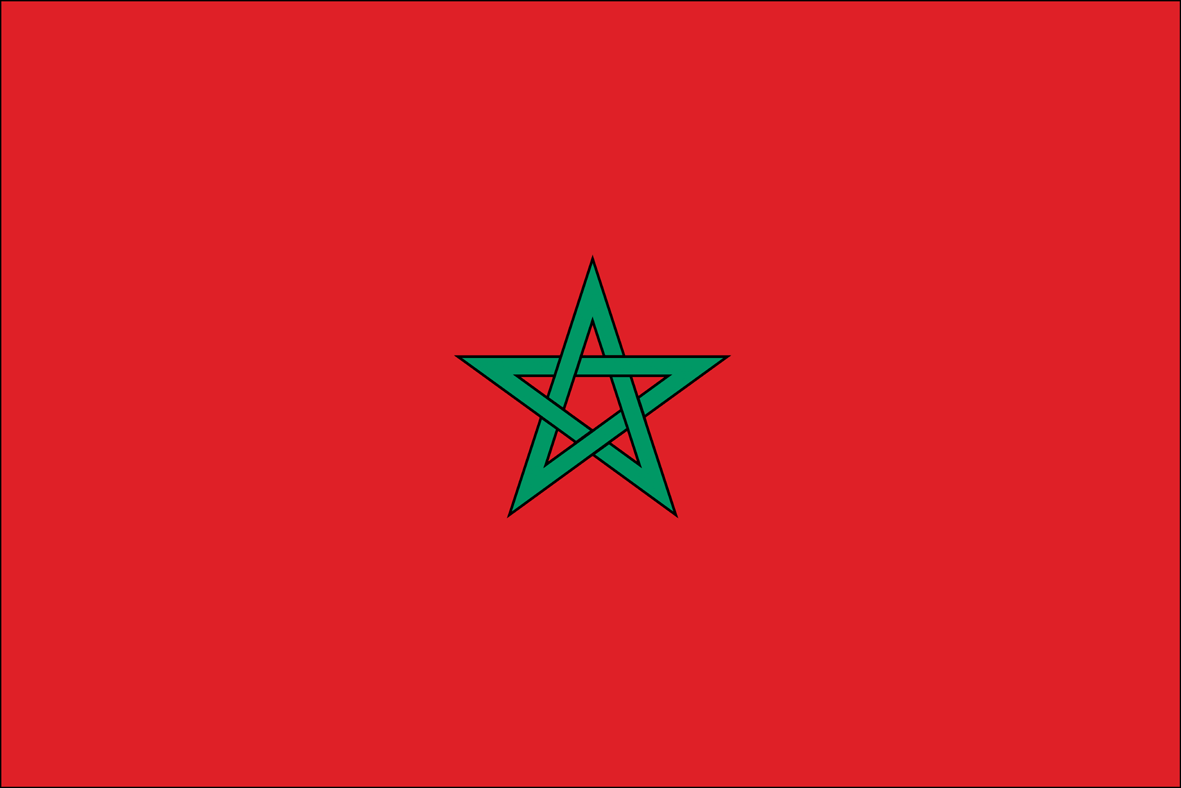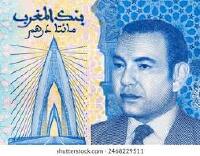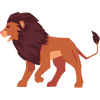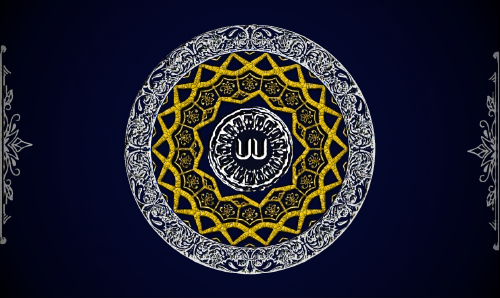| National Factbook |
| Flag: |

|
| Nation Name: |
Al Maghrib |
| Leader Name: |
Anass |
| Currency: |

Dirham Al Maghribi |
| National Animal: |

Lion |
| History: |
Morocco, located in North Africa at the crossroads of Europe and the Middle East, has a rich and layered history stretching back to prehistoric times. Archaeological evidence suggests human presence in Morocco as far back as 300,000 years ago, including early Homo sapiens fossils found at Jebel Irhoud.
Ancient and Classical Periods
By the 12th century BCE, the Phoenicians had established trading posts along Morocco’s coast, later joined by the Carthaginians. After the fall of Carthage, the region came under Roman influence. The Roman province of Mauretania Tingitana flourished from the 1st to the 3rd century CE, with cities like Volubilis serving as major centers.
Following Rome’s decline, Morocco saw successive waves of invasion and migration by Vandals and later Byzantine control in the north, though their influence remained limited.
Islamic Conquest and Early Dynasties
In the 7th and 8th centuries, Arab Muslim forces spread Islam across North Africa. Morocco was gradually Islamized, though Berber (Amazigh) tribes retained significant autonomy and cultural influence.
The first independent Moroccan state emerged with the Idrisid dynasty (788–974), founded by Idris I, a descendant of the Prophet Muhammad. This marked the beginning of Moroccan Islamic monarchy. Subsequent Berber-led dynasties included:
Almoravids (1040–1147): Expanded Moroccan power across much of North Africa and into Spain (al-Andalus).
Almohads (1121–1269): A religious reformist dynasty that also ruled parts of Iberia and North Africa.
Marinids (1244–1465): Patrons of Islamic scholarship and architecture, based in Fez.
Saadian and Alaouite Dynasties
The Saadian dynasty (1510s–1659) emerged during a period of instability, defending the country against Portuguese and Spanish incursions. Under Ahmad al-Mansur, Morocco reached a cultural and military peak.
Since the 17th century, Morocco has been ruled by the Alaouite dynasty, which remains in power today. Originating from Tafilalt, the Alaouites restored stability and continued Morocco's distinct Islamic and Amazigh identity.
Colonial Period
During the 19th and early 20th centuries, European powers increasingly encroached on Moroccan sovereignty. In 1912, France established a protectorate over most of Morocco, while Spain controlled parts in the north and south. Despite colonial rule, Moroccan nationalism grew, culminating in the Istiqlal (independence) movement.
Independence and Modern Era
Morocco regained independence from France and Spain in 1956 under King Mohammed V. His son, King Hassan II (1961–1999), centralized power and ruled during a time of both repression and modernization.
King Mohammed VI, who ascended in 1999, has overseen significant reforms in infrastructure, women’s rights, and economic development, while maintaining strong monarchical control. The issue of Western Sahara, claimed by Morocco but disputed by the Sahrawi Polisario Front, remains a key regional challenge.
Cultural Identity
Morocco’s unique identity blends Arab, Amazigh, Islamic, African, and European influences. Its historic cities—Fez, Marrakech, Meknes, and Rabat—bear witness to its rich past. It remains one of the few North African countries to maintain a long-standing monarchy and political stability in a turbulent region. |
| Geography |
| Continent: |
Europe |
| Land Area: |
8,046.70 sq. km |
| Terrain: |
Morocco’s terrain is as diverse as its history, shaped by mountains, deserts, coastlines, and fertile plains. This geographic variety contributes to the country’s rich biodiversity, cultural regions, and economic activities.
1. The Atlas Mountains
The Atlas Mountains are the most prominent feature of Morocco’s landscape, stretching from the southwest to the northeast. They are divided into three main ranges:
High Atlas: The highest and most rugged range, home to Jebel Toubkal (4,167 m / 13,671 ft), the tallest peak in North Africa. The High Atlas acts as a weather barrier, separating the coastal and inland regions from the desert.
Middle Atlas: Located north of the High Atlas, with forested slopes and rolling hills. It’s cooler and wetter, with large cedar forests and fertile valleys.
Anti-Atlas: Located south of the High Atlas, this range is older and more eroded. It transitions into arid and semi-desert landscapes.
These mountains play a vital role in Morocco’s agriculture by trapping rainfall and feeding rivers.
2. Rif Mountains
In the north, along the Mediterranean coast, the Rif Mountains rise steeply from the sea. Though smaller than the Atlas, they are rugged and green, with deep valleys and sharp ridges. The Rif is known for its isolated Berber communities and has historically been less integrated into the national economy.
3. Coastal Plains
Morocco has two main coastlines:
Atlantic Coast (west): Long, straight, and sandy, with fertile plains inland such as the Chaouia and Doukkala regions. These plains support much of Morocco’s agriculture and urban centers, including Casablanca and Rabat.
Mediterranean Coast (north): More rugged, with small bays and cliffs, especially near the Rif Mountains.
These coasts support fishing, trade, and tourism.
4. Interior Plateaus and Plains
Between the Atlas and Rif ranges lie several plateaus and interior plains, including the Sais Plain around Fez and Meknes. These areas are agriculturally rich, thanks to alluvial soil and seasonal rainfall. They are key regions for cereals, olives, and vineyards.
5. Sahara Desert and Arid South
South of the Anti-Atlas lies Morocco’s part of the Sahara Desert. This region is extremely arid, with vast stretches of rock (hamada), sand dunes (ergs), and dry valleys (wadis). Though sparsely populated, desert towns like Merzouga and Zagora attract tourism and host nomadic communities.
The Drâa Valley and Ziz Valley cut through this desert terrain, sustaining oases and traditional agriculture with date palms and gardens.
6. Rivers and Water Resources
Morocco’s major rivers include:
Oum Er-Rbia
Sebou
Tensift
Drâa
These rivers originate in the Atlas Mountains and support irrigation and hydropower. However, many are seasonal and increasingly threatened by drought. |
| Highest Peak: |
Jebel Toubkal,
4,167 meters
|
| Lowest Valley: |
Sebkha Tah,
-55 meters
|
| Climate: |
Morocco’s climate is remarkably diverse, shaped by its varied terrain, location at the junction of Europe and Africa, and proximity to both the Atlantic Ocean and the Mediterranean Sea. The country features everything from Mediterranean weather in the north to arid desert conditions in the south.
Here’s a breakdown of Morocco’s climate by region and type:
🌊 1. Mediterranean Climate (Northern Coast & Rif Mountains)
Regions: Tangier, Tetouan, Al Hoceima, northern Rif
Features:
Hot, dry summers
Mild, wet winters
Rainfall mainly from October to April
Typical temps:
Summer highs: 28–35°C (82–95°F)
Winter lows: 8–12°C (46–54°F)
Annual rainfall: 500–1,000 mm (20–40 in)
This climate supports olive trees, citrus groves, and forests.
🌾 2. Continental Climate (Interior Plains & Middle Atlas)
Regions: Fez, Meknes, Beni Mellal
Features:
Hot summers with occasional thunderstorms
Cold winters with frost and occasional snow
Strong seasonal contrast
Typical temps:
Summer: 30–40°C (86–104°F)
Winter: 2–10°C (35–50°F)
Rainfall: 400–800 mm (16–32 in)
These areas are agriculturally important but vulnerable to drought.
🏔️ 3. Alpine/Mountain Climate (High Atlas & Middle Atlas)
Regions: Ifrane, Azilal, Oukaimeden, Imilchil
Features:
Cold winters with heavy snowfall
Cool summers
High precipitation at altitude
Typical temps:
Winter: -5 to 5°C (23–41°F)
Summer: 20–30°C (68–86°F)
Snowfall: Common from November to March
The mountains act as a water source for much of the country and support forests and alpine vegetation.
🏜️ 4. Arid & Desert Climate (South & East, near the Sahara)
Regions: Ouarzazate, Errachidia, Merzouga, Zagora
Features:
Very hot, dry summers
Mild winters
Rain is rare and irregular
High evaporation rates
Typical temps:
Summer: 35–45°C (95–113°F), can reach 50°C (122°F)
Winter: 5–20°C (41–68°F)
Rainfall: Often <100 mm (4 in) annually
Desert regions are prone to sandstorms and support only sparse vegetation.
🌬️ 5. Oceanic/Atlantic Climate (Western Coastline)
Regions: Casablanca, Rabat, Agadir, Essaouira
Features:
Moderate temperatures year-round
Cool sea breezes in summer
Humid air with morning fog
Occasional winter rains
Typical temps:
Summer: 24–30°C (75–86°F)
Winter: 10–18°C (50–64°F)
Rainfall: 300–500 mm (12–20 in)
This is Morocco’s most temperate and densely populated region.
Climate Challenges
Drought: Increasingly common due to climate change.
Water stress: Reservoirs and rivers are under pressure.
Extreme heat: More frequent in southern and inland areas.
Snow shortages: Affect mountain communities and tourism. |
| People & Society |
| Population: |
538,758 people |
| Demonym: |
Maghribi |
| Demonym Plural: |
Maghariba |
| Ethnic Groups: |
Arab - 70.0%
Amazigh - 40.0% |
| Languages: |
Darija - 100.0%
Tamazight - 100.0% |
| Religions: |
Islam (Sunni Islam, Maliki school) - 99.0%
Judaism - 0.5%
Christianity - 0.5% |
| Health |
| Life Expectancy: |
75 years |
| Obesity: |
24% |
| Alcohol Users: |
5% |
| Tobacco Users: |
13% |
| Cannabis Users: |
10% |
| Hard Drug Users: |
0.2% |
| Economy |
| Description: |
Morocco’s economy is one of the most diversified in Africa, blending agriculture, industry, services, and trade. It has seen steady growth in recent decades and is considered a lower-middle-income country by the World Bank, with ambitions to become a regional economic hub.
📊 Key Economic Indicators (2024 estimates)
GDP (nominal): ~$150 billion USD
GDP per capita: ~$4,000 USD
Growth rate: ~3.2% (after recovering from drought and inflation impacts)
Inflation: ~4.5%
Unemployment rate: ~11.8% (youth unemployment ~26%)
Currency: Moroccan Dirham (MAD)
🌾 1. Agriculture (~12–14% of GDP)
Vital for rural employment (~30% of total jobs)
Major products: cereals (wheat, barley), olives, citrus, vegetables, argan oil, and dates
Vulnerable to climate shocks, especially drought and water scarcity
Key sector under reform via “Green Morocco Plan” and its successor “Generation Green 2020–2030”, which aim to modernize farming and boost exports
🏭 2. Industry (~25–30% of GDP)
Phosphates: Morocco holds over 70% of the world’s phosphate reserves and is one of the top global exporters (via OCP Group)
Automotive industry: Fastest-growing sector; Morocco is Africa’s leading car exporter, with plants for Renault, Stellantis (Peugeot), and others
Textiles and clothing: Longstanding export industry, especially to Europe
Aerospace: Growing sector clustered around Casablanca
Renewable energy: Major solar and wind projects like Noor Ouarzazate, part of Morocco's plan to produce 52% of electricity from renewables by 2030
🏙️ 3. Services (~55–60% of GDP)
Tourism: Key foreign exchange earner; destinations include Marrakech, Fes, Essaouira, Sahara
Finance and banking: Casablanca aims to be a regional financial center (via Casablanca Finance City)
Retail, telecom, education, and healthcare sectors are growing
🌍 Trade & Investment
Major trading partners: European Union (especially France and Spain), China, the U.S., and Gulf countries
Key exports: cars, phosphates, fertilizers, textiles, citrus, fish
Key imports: energy (oil, gas), machinery, foodstuffs
Member of African Continental Free Trade Area (AfCFTA) and free trade agreements with EU, U.S., Turkey
🏗️ Infrastructure & Development
Strong investments in:
High-speed rail (Al Boraq)
Ports (Tanger Med – largest in Africa)
Highways and logistics hubs
Morocco ranks high in North Africa for infrastructure quality |
| Average Yearly Income: |
$49.69 |
| Gross Domestic Product (GDP): |
$172,055,389.00 |
| GDP per Capita: |
$319.36 |
| Gross National Income (GNI): |
$9,790,760.00 |
| Industries: |
Morocco’s economy is built on several key industries that drive growth, exports, and employment. Here's a detailed overview:
🚗 1. Automotive Industry
Overview: A major success story since the 2000s, led by Renault, Stellantis (Peugeot‑Citroën), and Chinese partners like BYD.
Scale & Growth: In 2023, exports reached ~$14 billion, becoming Morocco’s top exporter, surpassing phosphates .
Investment: Stellantis is expanding capacity in Kenitra to 535,000 vehicles/year, focusing on electric and hybrid models
. Chinese EV battery giant Gotion plans a $1.3 billion gigafactory; other Chinese firms (Hailiang, CNGR) are building cathode/anode plants .
Employment & Integration: Employs over 220,000 people, with local sourcing rising to ~75% by 2030 .
⚗️ 2. Phosphate & Fertilizer (Mining & Manufacturing)
OCP Group: State-owned, controls ~70% of the world’s phosphate reserves; top exporter of raw and processed.
Green Transition: Investing heavily (€13 billion by 2027) in renewable energy and decarbonization; partnering with Engie on green ammonia & water desalination for sustainable mining .
✈️ 3. Aerospace
Emerging Sector: $2 billion/year industry producing parts, MRO services for Boeing & Airbus.
Workforce & Training: Around 130 companies; 42% female employment. Skilled labor trained in specialized institutes
🎣 4. Fisheries
Scale: Largest fishery in Africa; annual catch over 1 million tonnes. Fisheries contribute ~3% of GDP and employ ~400,000 people .
Exports: Major source of foreign exchange; EU partnerships support modernization.
🧵 5. Textiles & Apparel
Overview: Long-standing export sector; in 2017, exports hit $7.3 billion, employing hundreds of thousands
🌍 6. Tourism & Services
Visitor Numbers: Broke records in 2024 with ~17.4 million tourists .
Economic Role: Second only to phosphates in foreign exchange. Infrastructure-led growth via Vision 2010 & ongoing investments.
🌐 7. Renewable Energy & Green Industries
Capacity Growth: 41% of power from renewables; target 52% by 2030
Green Hydrogen & Ammonia: Strategic projects (with Engie, TotalEnergies) aim for green ammonia export and integration with OCP’s operations
EV Ecosystem: EV battery production, green fertilizer, and sustained automotive integration form a renewable energy-industrial synergy
💻 8. Information Technology & Telecom
Growth: Pioneering 3G in North Africa; IT/offshore services contributed ~$500 million to GDP by 2015, employing ~30,000
Telecom Infrastructure: High mobile penetration (~69% in 2008) and broadband growth.
🏙️ 9. Financial Services & Logistics
Casablanca Finance City: Regional financial hub with 240+ international firms, 7,000+ jobs
Transport Infrastructure: Ports (Tanger Med), high-speed rail, roads, and logistics networks support trade and industrial sectors |
| Military |
| History: |
Royal Moroccan Armed Forces (FAR)
Overall strength:
Active personnel: ~300,000
Reserve: ~150,000
Auxiliary / Paramilitary (Gendarmerie, Auxiliary Forces): ~65,000+
Command structure:
Supreme Commander: King Mohammed VI
Defense Minister: Abdellatif Loudiyi
Budget:
119.8 billion MAD ($11.8 billion) in 2023 (~8.5% of GDP)
Increased to 133 billion MAD ($13 billion) in the 2025 draft budget
🔹 Branches
Royal Army
~175,000 active troops plus reserves (~150,000), Gendarmerie, and Auxiliary Forces
Equipped with modern tanks (M1A1/A2, M60, T‑72B/E), APCs, artillery, air defense systems, and drones
Royal Air Force
~13,000 personnel with 400+ aircraft (F-16s, Mirage F1/2000, F‑5s, Apaches, Chinooks, UAVs)
Royal Navy
~7,800 personnel (including 1,500 Marines), with ~121 vessels and 17 aircraft, tasked with coastal and EEZ defense in the Strait of Gibraltar
Royal Gendarmerie & Royal Guard
Gendarmerie: Military police with nationwide public security duties
Royal Guard: ~1,500-person elite unit protecting the monarchy
Auxiliary Forces
~45,000 personnel under Interior Ministry, assisting in rural security, border control, and emergency response
⚙️ Capabilities & Modernization
Global ranking: 59th in Global Firepower Index (2025)
Key upgrades: Continued acquisition of F-16 Block 72, AH-64 Apache helicopters, Patriot systems, modern armored vehicles, drones, and anti-air defenses
Budget focus: Modernization of equipment, boosting local defense industry, and shifting toward mechanized and technologically capable forces
🌍 Operational Roles
Domestic defense: Border control (notably the Sahara berm), counter-insurgency, and internal security
Regional and international:
Peacekeeping missions in Africa (Somalia, Congo, Bosnia, Kosovo, Haiti)
Large-scale exercises such as African Lion (May 2025) |
| Soldiers: |
0 |
| Tanks: |
0 |
| Aircraft: |
0 |
| Ships: |
0 |
| Missiles: |
0 |
| Nuclear Weapons: |
0 |
| Last Updated: 07/17/2025 11:36 pm |














